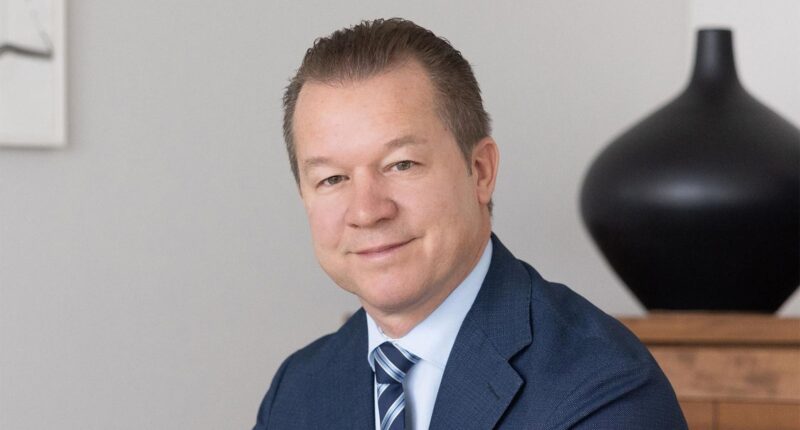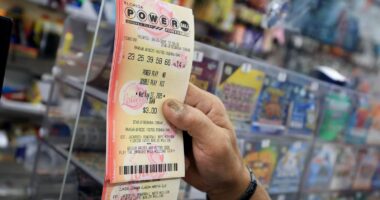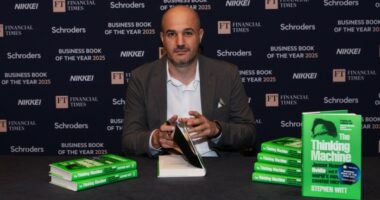Share this @internewscast.com
The anti-carbon movement is losing steam. That hasn’t stopped Pictet, a large Swiss money manger, from finding clean-energy stocks that pack some power.
The green energy sector is experiencing an unexpected surge, and Xavier Chollet’s low-carbon investment portfolio is reaping the benefits. But what exactly is propelling this success?
Xavier Chollet, who heads the Clean Energy Transition strategy at Pictet, a prominent Swiss investment firm, has faced significant challenges over the years. Historically, alternative-energy stocks have lagged behind the S&P 500 index. However, this year marks a turning point. Chollet’s $5.5 billion portfolio has risen by 26%, outperforming the S&P 500 by 9 percentage points.
Two key factors contribute to the resilience of Pictet’s portfolio. First, Chollet employs a broad definition of “transition,” allocating just 24% of the funds to renewable energy sources like solar and wind. The remaining investments focus on themes such as energy efficiency in semiconductors, building sustainability, and industrial process improvements.
Furthermore, Chollet avoids high-risk ventures within the green-energy sector. “We aim to invest in profitable companies that are not reliant on subsidies,” he explains. This cautious approach excludes many typical candidates for a carbon-conscious fund, such as green hydrogen companies, which often struggle financially despite government support.
During the dramatic rise of solar and hydrogen stocks in 2020, Chollet’s portfolio did not match the gains of some alternative-energy funds. However, when those stocks plummeted the following year, Pictet’s fund remained resilient. Chollet’s broader strategy of investing in the energy transition, coupled with a preference for relatively stable stocks, has proven to be a long-term advantage.
Chollet, 51, hails from Geneva and joined Pictet’s headquarters after earning business degrees from the University of Lausanne and the University of Miami. He has been steering the clean-energy strategy since 2011. While most of his clients are institutional or individual investors in Europe, Pictet has recently introduced the Cleaner Planet ETF to cater to the U.S. market. Chollet’s team is instrumental in selecting half of the stocks for this new U.S. fund.
Chollet speaks with a French accent but his portfolio has an American slant, with 74% of assets in U.S. companies. His biggest bet, with not quite 5% of assets, is on Nextracker, which makes equipment to aim solar arrays at the sun. It’s in the black. Its share price has more than doubled this year.
This, even though 2025 would seem to be a bad year to bet on solar. To the horror of environmentalists, Bill Gates, just four years after penning a book on the climate catastrophe, is now opining that the money spent fighting carbon might better be spent fighting poverty and disease. And then there are the politicians spouting the slogan “Drill, baby, drill.”
With a fossil-fuel lover in the White House, how can renewable energy be doing so well now? Because investors, anticipating the worst, were pleasantly surprised this year. That allegedly beautiful tax bill that President Trump pushed through didn’t kill alternative-energy subsidies. It mostly threw on some deadlines and some buy-American provisions. Says Chollet: “The rules of the game for the current administration in solar in the U.S. are way better than everyone expected.”
What would happen in a world without rules—with, that is, neither mandates nor subsidies? Wouldn’t solar and wind be dead?
Not at all, says Chollet: “Close to 90% of the new power additions in the world come from renewable and storage, not from nuclear or gas or coal, because it makes economic sense.”
He pulls out a chart of electricity generation costs in the U.S. With fuel and capital costs combined, a kilowatt-hour of onshore wind costs 5 cents, solar 6 cents, natural gas 10 cents. He concedes that the numbers for the two renewables would be higher if you included the cost of batteries to supply juice during doldrums and darkness. But even with batteries attached, he says, renewables are cheaper than fossil-fuel or nuclear power generation. The costs he cites, importantly, are before any benefit from government subsidies.
Put costs aside for a moment, Chollet goes on. Think about availability. Artificial intelligence research by Microsoft, Meta, Amazon and Alphabet will draw lots of power, sometimes a gigawatt or more per installation. (A gigawatt would power a large city.) Those AI fanatics want their energy now, not later.
The delivery time for a solar plant in the U.S. is a year, Chollet says, for an onshore wind farm two years. A gas-powered plant needs turbines for which the wait, including installation time, is four years. What about nuclear? Even if cookie-cutter plants (“small modular reactors”) catch on, it will take a utility ten years for the permits and the construction, he says.
Trump doesn’t like renewables and he doesn’t like solar panels that come from China. But he also doesn’t want China getting ahead in AI, Chollet says. So Trump won’t get in the way of the solar that will power data centers. Chollet has stakes in solar companies (like Nextracker) that supply utility-scale projects. He avoids companies (like Sunrun) doing residential solar.
Better still, Chollet’s definition of what is meant by “clean energy” allows him to get another piece of the hot data center business. So far Nvidia has been the conspicuous beneficiary of AI spending, but Chollet sees the arc of technology bending toward two other semiconductor companies. He has stakes in Broadcom and Marvell Technology, which make “application specific integrated circuits.” ASICs, while less flexible than Nvidia’s graphics processing units, are less gluttonous with electricity consumption. Chollet is in semiconductors for the growth; he’s allowed to be in them on the theory that specialized chips will do less damage to the planet than the usual kind.
High-growth stocks tend to be both expensive and risky. Broadcom trades at 93 times trailing earnings. In Chollet’s eyes its growth makes it affordable at 29 times the earnings he expects two years from now. As for risk, that is dampened by the boring stocks in the Pictet lineup, such as Xcel Energy, a midwestern utility; Linde, which sells gases to make industrial processes more efficient, and TopBuild, which sells garage doors and asphalt shingles.
Wait. What’s green about garage doors? TopBuild also sells insulation. By reducing heating and cooling loads, insulation preserves the planet.
Technology is uncertain. The hot and cold of carbon politics is uncertain. But there is something to be said for accepting risk while moderating it. In 2020 the iShares Clean Energy ETF delivered a 141% return, Morningstar reports, leaving Chollet’s stocks far behind with only 54%. But in 2021 the iShares fund lost money while Chollet’s portfolio gained 12%. Over the past decade (through September) iShares has delivered a 7% annual return in clean energy, Chollet 12%. For him, adopting a light shade of green has been a good strategy.
More from Forbes












